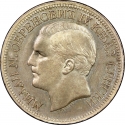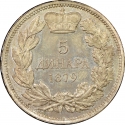You are about to finish your registration. Please check your mailbox (including spam folder). There should be a letter with a confirmation link. Check setting to make sure that your e-mail address is correct.
Send letter againDescription
The Karađorđević is a Serbian dynastic family, founded by Karađorđe Petrović, the Veliki Vožd ("Grand Leader") of Serbia in the early 1800s during the First Serbian Uprising. The relatively short-lived dynasty was supported by the Russian Empire and was opposed to the Austria-Hungary supported Obrenović dynasty. After Karađorđe's assassination in 1817, Miloš Obrenović founded the House of Obrenović. The two houses subsequently traded the throne for several generations. Following the assassination of Alexander in 1903, the Serbian Parliament chose Karađorđe's grandson, Peter Karađorđević, then living in exile, for the throne of the Kingdom of Serbia. He was duly crowned as King Peter I, and shortly before the end of World War I, representatives of the three peoples proclaimed a Kingdom of the Serbs, Croats and Slovenes with Peter I as sovereign. In 1929, the Kingdom was renamed Yugoslavia, under Alexander I, the son of Peter I. In November 1945, the throne was lost when the League of Communists of Yugoslavia seized power, during the reign of Peter II.
Engraver: Stefan Schwartz
Obverse

|
A profile portrait of Đorđe Petrović (Karađorđe) partially covered by a profile portrait of King Petar I Karađorđević, both facing to the right, surrounded by the inscription "Petar I. Karađorđe". Engravers initials below. ПЕТАР I. КАРА-ЂОРЂЕ |
|---|---|
Reverse

|
Denomination below Greater coat of arms of Kingdom of Serbia. Date above. 1804 1904 |
| Edge |
God Save Serbia ***** БОГ * ЧУВА * СРБИJУ |
5 Dinara
100th Anniversary of the Karađorđević Dynasty
KM# 27
100th Anniversary of the Karađorđević Dynasty



